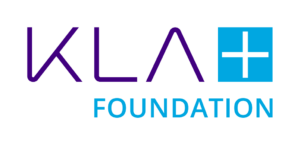
On June 24, 2021, in an immersive virtual experience presented by headline sponsor Accenture, the Computer History Museum celebrated Indian-American computer scientist and professor Raj Reddy for his groundbreaking work in artificial intelligence, robotics, and computer science education.
Raj has devoted much of his life’s work to how technology can serve society, particularly in education and in bridging the digital divide through access to information, inspiring the event’s theme of empowering people through technology. The second of four to be honored this year, Raj Reddy joins a distinguished group of tech pioneers who have been inducted into CHM’s Hall of Fellows over the last thirty years.
Accessible to a global audience for the first time, and available in Hindi and Mandarin, the virtual program was cohosted by Dr. Talithia Williams, Harvey Mudd College mathematics professor and host of PBS Nova Wonders, and CHM President and CEO Dan’l Lewin. It documented Raj’s significant contributions in computing history, explored how his work has manifested in our digital present, and looked ahead to the future. Along the way, we heard from those Raj has touched with his leadership, mentoring, empathy, and overall brilliance. Accomplished former students and colleagues shared personal memories and tributes.
In case you missed it, here are some highlights from the show.
Raj Reddy was the very first computer science PhD at Stanford, and in the “Backstage” part of the program he was interviewed about the roots of his interest in technology by former Stanford President John Hennessy.
In 1959, when he was a graduate student at New South Wales University in Australia, Raj encountered a huge vacuum tube computer that someone had managed to program to play music. He said, “It was kind of awesome at that time.” After a couple of years with IBM, Raj went to graduate school at Stanford in 1963, where the computer science department was very small, very new, and very exciting. There he encountered the DEC PDP-1 minicomputer. It changed his life.
Raj describes meeting his first mini-computer.
With the PDP-1, computers could begin to, in Raj’s words, “see, and do, and hear things.” No longer just crunching numbers, they could act. But no one understood the massive amount of computing power that would be necessary for artificial intelligence and speech recognition.
Raj says his empowering, hands-on mentoring style comes from imitating his own mentors and colleagues at Carnegie Mellon University, computer scientist Allen Newell, and AI pioneers Alan Perlis and Herb Simon. He says, “I almost never heard ‘no’ from any of them.” Raj paid that forward to his own mentees.
James and Janet Baker, cofounders of early speech recognition software Dragon Systems, described how Raj, “the epitome of empowerment for so many people,” in Janet’s words, gave James as a graduate student the go-ahead to try out a mathematical model that had never been done before. Hidden Markov modeling ended up becoming the leading technique in speech recognition. Millions of people were affected by projects and initiatives that Raj forwarded and inspired with his long-term vision of AI as “a contribution to humanity,” says James.
Raj’s vision of tech working to serve people led him to help launch The Million Books Project at Carnegie Mellon, an initiative that worked with government and research partners in India and China to scan books in many languages to provide free digital access to books worldwide. He also cofounded Rajiv Ghandi University of Knowledge Technologies to provide education to students from rural India.
Computer scientist and CHM Fellow Alan Kay offered “three unusual things” about his longtime friend that put Raj on the shortlist to lead another ambitious project.
Alan Kay taps Raj for an ambitious project.
Raj offered his thoughts on autonomous vehicles and the challenges of “human-machine symbiosis” as he looks into the future of AI.
Raj Reddy describes big challenges for AI.
A variety of individuals offered their appreciation for Raj’s professional achievements, insight, energy, and personal commitment to helping others and using technology as a force for positive social impact.
Paul Daugherty, Group Chief Executive, Technology and CTO for headline sponsor Accenture, noted that the pandemic has provided an unprecedented opportunity for technology companies to move forward by factoring in innovation, accessibility, sustainability, and collaborative open environments that earn trust and maintain human connections. Innovators like Raj will lead the way.
Raj’s former student AI expert Kai-Fu Lee, who has led AI efforts in the US and China at Microsoft, Apple, and Google shared a story about Raj’s support when he was a graduate student and how Raj taught him an important leadership skill.
Tribute to Raj by Kai-Fu Lee.
Xunhe Pan, a computer scientist who collaborated from Zhejiang University with Raj on The One Million Books project, is the vice president of the Chinese Academy of Engineering and a university leader. He credits Raj with proposing the project that can benefit all humanity and has involved libraries all over the world.
AI expert and CHM Fellow Ed Feigenbaum presented the award to Raj, who he met at Stanford in 1965, and refers to as “the father of speech understanding.” In addition to his groundbreaking work in AI, Feigenbaum noted, Raj is also a skilled leader of ambitious, expansive projects, and a great role model.
Ed Feigenbaum presents the award to Raj.
Raj has devoted his life to developing technology to serve people and his AI innovations underpin many of the technologies that shape our lives today. How did a barefoot boy from India find himself at the forefront of a computing revolution? Raj tells us in his own words about his past, present, and vision for “guardian angel platforms” of the future.
Raj accepts the award.
After a musical interlude joining classical Indian motifs and modern sounds, two colleagues offered their tributes to Raj as a world-class institution builder.
Carnegie Mellon University President Farnam Jahanian noted that Raj has catalyzed significant advances in artificial intelligence and robotics. He outlined Raj’s key leadership contributions at CMU and beyond, particularly in the department of computer science, where he embodied a culture that champions bold innovations and makes them happen. Raj was also the founding director of the Robotics Institute, establishing it as a worthy field of study with far-ranging implications, and helped launch the Institute for Software Research.
From Mumbai, Chair of the board of Tata Sons Natarajan Chandrasekaran lauded Raj’s profound contributions to technology, society, and underserved communities. He focused particularly on Raj’s humility and focus on “the bottom of the pyramid” and his efforts to bring access to the people who don’t have it, particularly in education at the Rajiv Ghandi University of Knowledge Technology and the Indian Institutes of Information Technology.
Computer scientist and Raj’s former student Xuedong Huang, now technical fellow and Azure AI chief technology officer, shared a demo of speech translation in action in the European Union parliament that was built on Raj’s speech recognition technology purchased from Carnegie Mellon in 1993. Huang also shared a demo of the SeeingAI app, which helps those with sight impairments to interpret the world around them. Check them out below.
Xuedong Huang pays tribute to Raj with examples of the impact of his work.
In the 1990s, Raj and other technologists served on the Microsoft Technology Board. After their Seattle meetings, they would often gather for dinner and Raj, a perennial optimist, would make predictions about the future, leading to a friendly wager. These bets were made for nearly a decade with stakes ranging from dinner at the winner's choice restaurant to $1,000. In 1993, they bet that within 10 years, AI would have more impact on society than the transistor. In 1996, they bet that by 2006, a self-driving car would be broadly available that cost less than a 20% premium over other cars.
Four of the original group reunited for a Bet On the Future live “gameshow” with Raj: Gordon Bell, John Hennessy, Ed Lazowska and 2021 CHM Fellow Honoree Andy van Dam.
Raj’s 2021 prediction for the future? In ten years a universal translator for all languages will be available for people to speak with one another in any language. The audience backed Raj up, along with John Hennessy (with a few caveats about computing power) and Ed Lazowska (with some concerns about latency), but Gordon Bell and Andy van Dam were naysayers.
The gentle teasing about Raj’s techno-optimism and clear affection shown among this group of iconic computing pioneers provided a heartwarming cameo of his life and impact.
For all footage from CHM's June 24 event, “Empowering Humanity Through Technology: A Celebration of Raj Reddy,” video extras, and related content, visit our dedicated page to 2021 CHM Fellow Raj Reddy.
About the 2021 CHM Fellow Awards
The 2021 CHM Fellow Awards marks the Museum’s first-ever virtual Fellow Awards. CHM will celebrate the 2021 Fellows in a yearlong four-part series of thought-provoking virtual events and engaging digital content that explores the story and impact of each honoree and the present and future of tech for humanity.
Learn more about this year’s honorees and the 2021 Fellow Awards.


